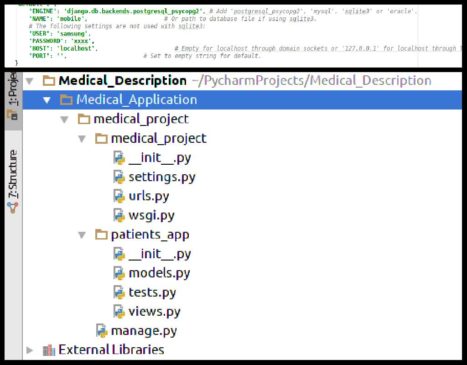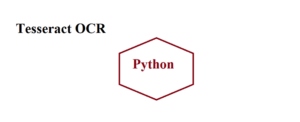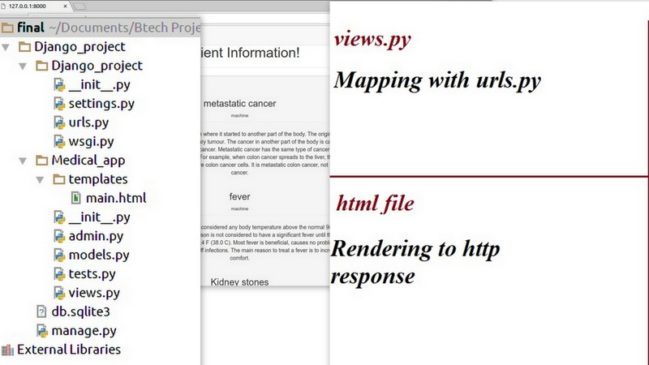![]()
Frontend frameworks have become the cornerstone for creating such attractive and responsive web applications. They offer standardized, pre-written code in the form of components and tools, making it easy to create a scalable and maintainable code base.
As we delve into the world of frontend frameworks, we find a plethora of options, each with its own unique features, benefits, and quirks. Choosing the right UI framework can be overwhelming and critical to the success of your app.
What are frontend frameworks?
A front-end framework is a set of pre-written, standardized code tools and libraries used to facilitate client-side development of a website or web application. The client side, often called the frontend, is the part of the website that users interact with directly; includes everything that users experience directly: text, images, sliders, buttons, animations, and more.
Purpose of frontend frameworks
Frontend frameworks serve several key purposes in web development:
- Rapid development: They speed up the custom software product development process by providing a collection of ready-to-use templates and code components.
- Responsiveness: Many frameworks come with responsive design in mind, making it easy to create web applications that work seamlessly on a variety of devices and screen sizes.
- Maintainability: With a structured code base and component reuse, frameworks make it easy to maintain and update web applications.
- Performance: Frameworks often include optimizations to improve website performance, such as minimizing code and reducing loading time.
Top frontend frameworks to consider for development
These are the top 6 frontend frameworks that have been recognized for their notable features and community involvement.
React
Component-Based Architecture: React The design revolves around reusable components, making it easier for software application development company to manage the state and data of components in complex applications.
- JSX Syntax: React uses JSX, a syntax extension that combines HTML with JavaScript, providing a more intuitive way to build the user interface.
- Virtual DOMs: To optimize rendering performance, React implements a virtual DOM that efficiently updates the browser’s DOM.
- One-way data binding: React’s data flow structure simplifies tracking and managing data within an application.
- Rich ecosystem: With a wide range of libraries and a strong community, React offers extensive resources for developers , including high-quality documentation and tutorials.
Angular
- Based on TypeScript: Angular uses TypeScript, which incorporates static typing and object-oriented elements into the framework, improving code quality and maintainability.
- MVC Framework: Angular adheres to the Model-View-Controller pattern, allowing for a separation of concerns, simplifying the development process.
- Bidirectional data binding: This feature keeps the model and view automatically synchronized, simplifying updates and changes to the user interface.
- Dependency Injection: Angular has a built-in dependency injection system, which promotes reuse of components and services.
- Comprehensive tools: Angular provides a comprehensive set of tools for testing, animation, and more, making it a solid choice for enterprise-grade applications.
Vue.js
- Reactivity and composability: Vista is designed to be reactive and composable, offering an accessible and optimized model for managing application state.
- Template Syntax: Vue uses an HTML-based template syntax that allows enterprise software development company to declaratively bind the rendered DOM to the underlying application data.
- Virtual DOMs: Like React, Vue leverages a virtual DOM to apply changes to the DOM as efficiently as possible.
- Ease of integration: Vue is known for its ability to be adopted incrementally, making it a flexible option for projects that need to integrate a framework little by little.
Slender
- No virtual DOM: Unlike React and Vue, Svelte compiles components at compile time, eliminating the need for a virtual DOM and resulting in faster runtime performance.
- Less code: Svelte reduces repetitive text by inferring the behavior of the code you write, resulting in more concise and readable code bases.
- Reactive Updates: Svelte ensures that the DOM is updated reactively and efficiently whenever the state of the application changes.
- Built-in Transitions: Svelte includes transition effects out of the box, allowing for more attractive user interfaces with less effort.
jQuery
- Simplicity and ease of use: jQuery simplifies complex JavaScript operations, making it accessible to developers of all levels.
- Great Community Support: Being one of the first frontend frameworks, jQuery has a sizeable community that provides a large number of plugins and solutions.
- DOM Manipulation: jQuery offers powerful features for HTML/DOM manipulation as well as CSS manipulation, which are easy to implement.
- AJAX Support: With jQuery, custom software developer can easily manage AJAX requests, which is essential for dynamic content loading.
Ember.js
- Convention over configuration: Ember.js emphasizes a set of conventions to follow, which helps reduce the decision-making overhead for developers.
- Robust Routing: Ember provides a consistent, feature-rich routing mechanism, which simplifies the navigation and organization of complex applications.
- Template Engine: Use the Handlebar template engine to create clean, logic-free templates, which contributes to cleaner, more maintainable code.
Points to consider when choosing frontend frameworks
When choosing a front-end development framework , it is essential to consider several factors that can influence the immediate and long-term success of your project.
Project requirements
- Complexity: Evaluate the complexity of the application you are building. Some frameworks are better suited for complex, large-scale applications, while others excel at simple, single-page applications.
- Functionality: Determine the specific functionalities needed, such as real-time data, SEO compatibility, or mobile responsiveness, and choose a framework that meets these needs.
- Scalability: If you anticipate growth in your app’s user base or functionality, look for a framework that scales well.
Performance considerations
- Speed: Evaluate the performance implications of the framework, including load times, rendering speeds, and refreshes.
- Ecosystem and Tools
- Libraries and Plugins: Check for the availability of additional libraries, plugins, and tools that can speed development and offer expanded functionality.
- Compatibility: Make sure the framework is compatible with other tools and systems you plan to use, such as backend frameworks, databases, and deployment platforms.
- Longevity and preparation for the future
- Maintenance and Updates: Look at the framework’s maintenance history and frequency of updates.
- Roadmap: Review the framework development roadmap to ensure it aligns with future trends and technologies.
Documentation and resources
- Quality of documentation: Good documentation can greatly speed up the learning process and serve as a reference during custom enterprise software development
- Training Resources: The availability of training resources, such as online courses, tutorials, and books, can be crucial to improving team skills.
Licenses and costs
- Open source vs. proprietary: Most frontend frameworks are open source, but it’s important to understand the license terms to ensure they fit the needs of your project.
- Costs: Consider the potential costs associated with using the framework, including licensing fees or the need for premium plugins.
- Server-Side Rendering (SSR): For SEO or performance reasons, you may need SSR, which not all frameworks support natively.
Conclusion
Choosing a UI framework is a critical decision that can define the success of your application. Whether you prioritize performance, ease of use, scalability, or a vibrant community, there is a framework that aligns with your vision.
The optimal choice depends on a careful evaluation of your requirements, the team’s experience and the specific demands of your project. By considering the information provided here, you will be well on your way to making an informed decision that will lay the foundation for a solid, future-proof application.
However, if you are still undecided or need professional guidance to make your vision a reality. With our comprehensive application development solutions, we can help you navigate the complexities of frontend frameworks and deliver an exceptional product tailored to your business needs. Our team of experienced developers are experts at harnessing the power of cutting-edge front-end technologies to create apps that stand out in a crowded digital space.



